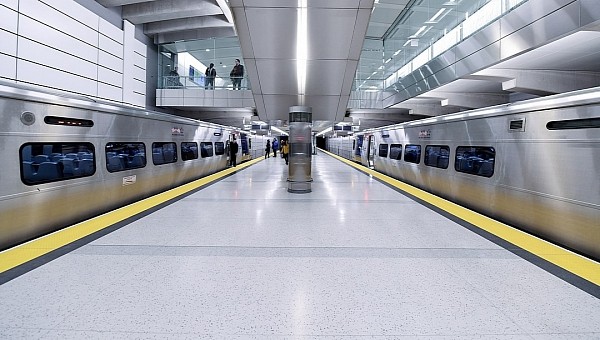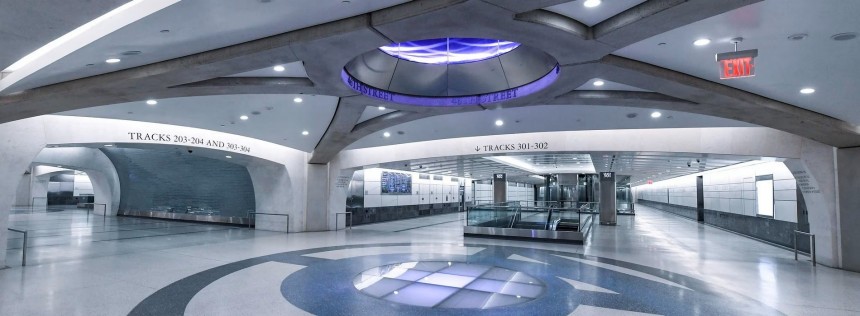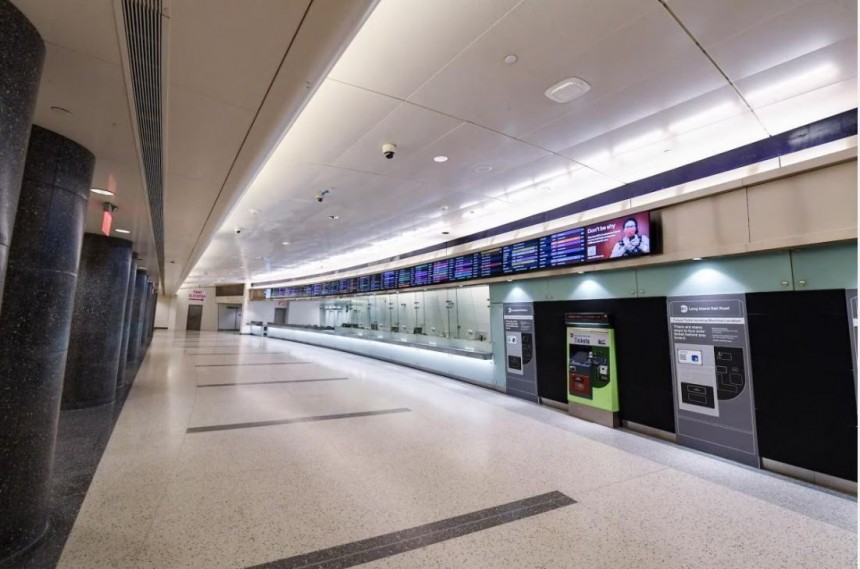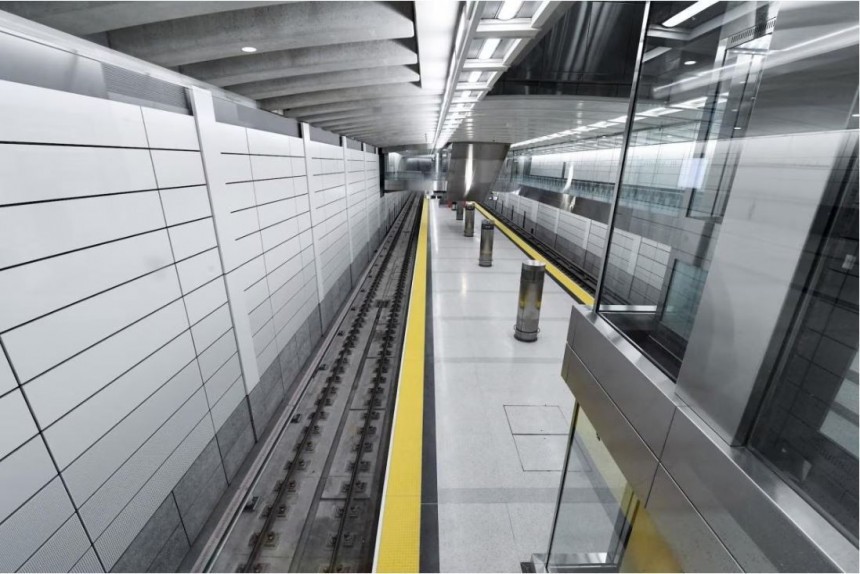For well north of a century, there was a duality of sorts regarding New York City's commuter rail system. As of this morning, all conventions are out the window. Thanks to the completion of a public works project some thought might never finish.
For decades, commuters to Manhattan from the Bronx, Westchester County, and Southern Connecticut, made use of the Metro-North Rail Road (MTR), serviced by Grand Central Terminal between East 42nd St and Park Ave in Mid-Town's East Side. Meanwhile, those commuting from the suburban sprawls of Long Island used their own bespoke Long Island Rail Road (LIRR) and were serviced by Penn Station further southwest between 31st and 33rd street.
The two separate rail lines have maintained a separate but equal status within the city since time immemorial and are comprised largely, but not entirely, of similar rolling stock. But on the morning of January 25th, the Long Island Rail Road began direct passenger service to Grand Central Terminal from nine separate service branches across its main line.
From Oyster Bay to Long Beach, Ronkonkoma to Woodside, Jamaica Queens, and everywhere in between, people working in Manhattan further north than 33rd St just had their commutes dramatically shortened. No more Subway Shuttle transfers followed by sketchy rides on the 1 train to get from Penn Station to Grand Central Terminal, now effectively a thing of the past. It's all the result of the MTA's LIRR East Side Access project that took over 15 years to complete from start to finish.
As far back as the 1960s, the idea of linking New York City's two major commuter rail systems alongside the subway was proposed by the New York City Transit Authority as a means to mitigating insane levels of commuter traffic from the LIRR's home terminal Penn Station. That's on top of the prolific railway and roadway initiatives, and various commuter creature comforts that would define the design of Robert Moses. As far as commuting to work was concerned in a modern, global context, New York City wrote the whole dang playbook.
For this to be possible, a brand new double-decker rail road tunnel would need to be constructed underneath the East River between the boroughs of Queens and Manhattan. Construction began on what was dubbed the 63rd St Tunnel in November 1969. But in an era of economic stagnation in NYC in the 1970s and 80s, the structure wasn't completed until October 1989. By then, efforts to bring the LIRR to GCT had all but stalled.
That was, until the events of September 11th, 2001. That day, residual vigor following the terrorist attacks on New York City and elsewhere lit a fire under by-then-forgotten proposals issued to little fanfare back in the mid-90s. Proposals that tried completing the East Side Access initiative once again were soon afterward finally approved. Using the internals of the 63rd St Tunnel, electrified rail line construction started proliferating in either direction between the two boroughs starting in September 2007.
With steady funding finally at hand, the 6.1-mile (9.8-km) long stretch of railway slowly but surely linked existing sections of LIRR infrastructure to Midtown Manhattan's West Side underneath the East River. Meanwhile, a shiny new rail station with four island platforms and eight tracks commenced construction underneath GCT in 2008. At a time when rush-hour commuters routinely choke Midtown Manhattan's East Side, a little help from the West Side could see commutes cut by as much as 40 minutes for Long Island locals working in the vicinity of 42nd street.
With 700,000 square feet (65,000 m2) of floor space in the station, there's plenty of room for access to Metro North and Subway line platforms, 22 elevators, 47 escalators, and enough retail space to give Penn Station a run for its money. Or, in real numbers, that's around 25,000 sq ft (2,300 m2) just in store-front retail space. Did we mention this is all underground? Penn Station itself is famous for having a larger choice of dining, retail, and support facility space than most entire small towns throughout the U.S. With this in mind, expect Grand Central Madison, the new name for the station, to be much the same.
Because Grand Central Terminal itself is one of the most beautiful stations anywhere in the world, a large emphasis on local city artists is a motif present in its newest addition. It's a touch most commuters will appreciate in the station's freshly finished main concourse. Grand Central Madison is theoretically capable of accepting the entire fleet of Metro North and LIRR railcars. The key difference between the two, apart from a couple of exceptions, is whatever name its decal set claims the railcar belongs to.
Be it the older Bombardier M7 cars, the new breed of Kawasaki M9s, or old school M1s and M3s in service since the mid-1980s. Even diesel-electric bi-level coach Kawasaki C3s that seldom tread in NYC access tunnels should be capable of running through the main line's new terminus at Grand Central Madison if necessary. In a train terminal as revered as GCT, in a city as prestigious as NYC, Grand Central Madison is a profound rallying cry declaring that New York is still capable of the daring construction projects the like they did back in the 1960s.
With New York's Governor Kathy Hochul riding the inaugural train into Grand Central Madison, there's a sense that arguably the largest single rail network in the world might yet save itself from a quality decline that plagued all MTA trains in the past. But to be accepted by locals and tourists alike, Grand Central Madison needs to be more than just pretty to look at.
Metro networks around the globe, at least the size of the LIRR and MTR put together, regularly operate on time with remarkable precision. In many respects, railways like the London Tubes, the Moscow Metro, and the Tokyo Metro attempt to mimic the gold standard that New York City once maintained a near monopoly on. With New York State's notoriously high-income taxes, there's little reason to tolerate anything other than consistent, on-time service year-round.
New Yorkers can and do demand an altogether higher level of service than most city metros can accommodate. In the world's most lucrative financial district, time spent waiting on trains is time spent hemorrhaging money. There are no fewer excuses for late trains in New York than in Berlin, Moscow, or Tokyo. We're not even asking for a late notice in the rare event of a late train the way the Japanese do. That would be pretty sweet, though.
The two separate rail lines have maintained a separate but equal status within the city since time immemorial and are comprised largely, but not entirely, of similar rolling stock. But on the morning of January 25th, the Long Island Rail Road began direct passenger service to Grand Central Terminal from nine separate service branches across its main line.
From Oyster Bay to Long Beach, Ronkonkoma to Woodside, Jamaica Queens, and everywhere in between, people working in Manhattan further north than 33rd St just had their commutes dramatically shortened. No more Subway Shuttle transfers followed by sketchy rides on the 1 train to get from Penn Station to Grand Central Terminal, now effectively a thing of the past. It's all the result of the MTA's LIRR East Side Access project that took over 15 years to complete from start to finish.
As far back as the 1960s, the idea of linking New York City's two major commuter rail systems alongside the subway was proposed by the New York City Transit Authority as a means to mitigating insane levels of commuter traffic from the LIRR's home terminal Penn Station. That's on top of the prolific railway and roadway initiatives, and various commuter creature comforts that would define the design of Robert Moses. As far as commuting to work was concerned in a modern, global context, New York City wrote the whole dang playbook.
That was, until the events of September 11th, 2001. That day, residual vigor following the terrorist attacks on New York City and elsewhere lit a fire under by-then-forgotten proposals issued to little fanfare back in the mid-90s. Proposals that tried completing the East Side Access initiative once again were soon afterward finally approved. Using the internals of the 63rd St Tunnel, electrified rail line construction started proliferating in either direction between the two boroughs starting in September 2007.
With steady funding finally at hand, the 6.1-mile (9.8-km) long stretch of railway slowly but surely linked existing sections of LIRR infrastructure to Midtown Manhattan's West Side underneath the East River. Meanwhile, a shiny new rail station with four island platforms and eight tracks commenced construction underneath GCT in 2008. At a time when rush-hour commuters routinely choke Midtown Manhattan's East Side, a little help from the West Side could see commutes cut by as much as 40 minutes for Long Island locals working in the vicinity of 42nd street.
With 700,000 square feet (65,000 m2) of floor space in the station, there's plenty of room for access to Metro North and Subway line platforms, 22 elevators, 47 escalators, and enough retail space to give Penn Station a run for its money. Or, in real numbers, that's around 25,000 sq ft (2,300 m2) just in store-front retail space. Did we mention this is all underground? Penn Station itself is famous for having a larger choice of dining, retail, and support facility space than most entire small towns throughout the U.S. With this in mind, expect Grand Central Madison, the new name for the station, to be much the same.
Be it the older Bombardier M7 cars, the new breed of Kawasaki M9s, or old school M1s and M3s in service since the mid-1980s. Even diesel-electric bi-level coach Kawasaki C3s that seldom tread in NYC access tunnels should be capable of running through the main line's new terminus at Grand Central Madison if necessary. In a train terminal as revered as GCT, in a city as prestigious as NYC, Grand Central Madison is a profound rallying cry declaring that New York is still capable of the daring construction projects the like they did back in the 1960s.
With New York's Governor Kathy Hochul riding the inaugural train into Grand Central Madison, there's a sense that arguably the largest single rail network in the world might yet save itself from a quality decline that plagued all MTA trains in the past. But to be accepted by locals and tourists alike, Grand Central Madison needs to be more than just pretty to look at.
Metro networks around the globe, at least the size of the LIRR and MTR put together, regularly operate on time with remarkable precision. In many respects, railways like the London Tubes, the Moscow Metro, and the Tokyo Metro attempt to mimic the gold standard that New York City once maintained a near monopoly on. With New York State's notoriously high-income taxes, there's little reason to tolerate anything other than consistent, on-time service year-round.










